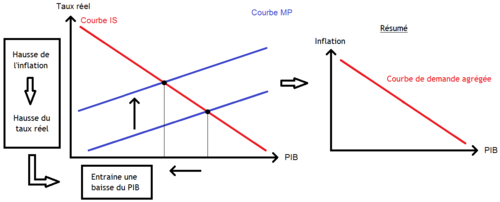
Aggregate supply curve
The aggregate demand is the sum of consumption, investment, government expenses, and net exports. Aggregate supply is the total output an economy produces at a given price level. Firms achieve equilibrium when they produce the quantity of goods and services consumers want to buy – that is, when aggregate supply equals aggregate demand. Here we will examine shifts in aggregate supply and aggregate demand and their short-term and long-term effects for the whole economy.
Upon successful completion, you will be able to:
- explain the factors leading to a shift in the consumption function;
- define short-run equilibrium and long-run equilibrium, and discuss how they differ;
- graphically represent and interpret a long-run aggregate supply curve, and explain its connection to natural level of unemployment; and
- describe how short-run equilibriums occur above and below the output level associated with the natural rate of unemployment.
The aggregate demand is the sum of consumption, investment, government expenses, and net exports. Aggregate supply is the total output an economy produces at a given price level. Firms achieve equilibrium when they produce the quantity of goods and services consumers want to buy – that is, when aggregate supply equals aggregate demand. Here we will examine shifts in aggregate supply and aggregate demand and their short-term and long-term effects for the whole economy.
Objectives
Upon successful completion, you will be able to:
Developer